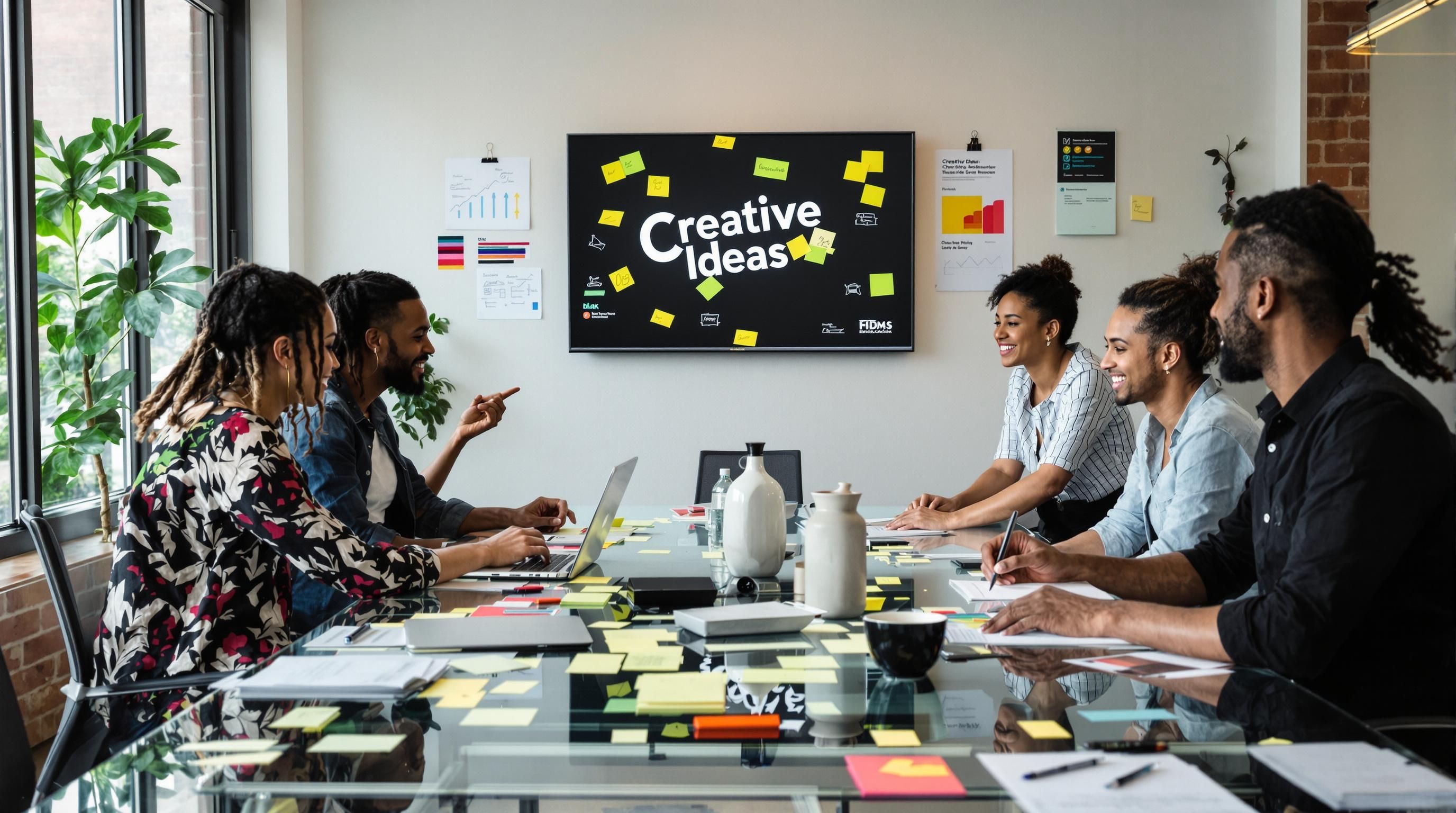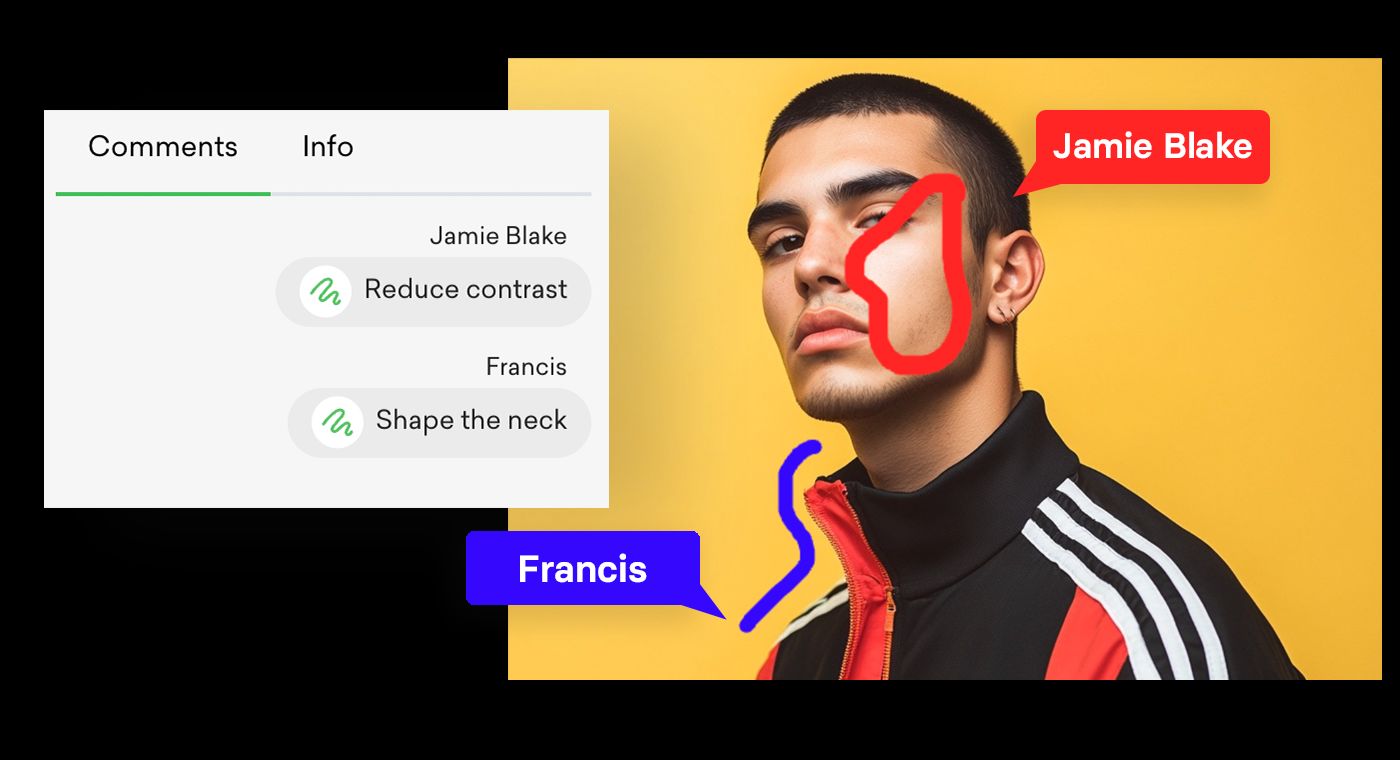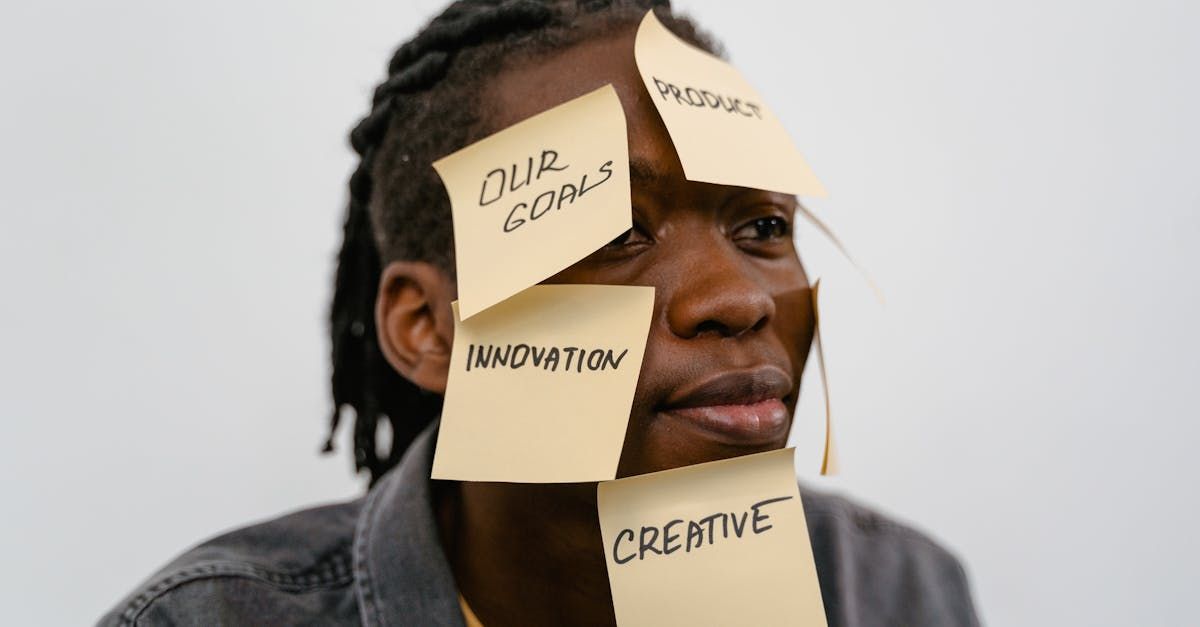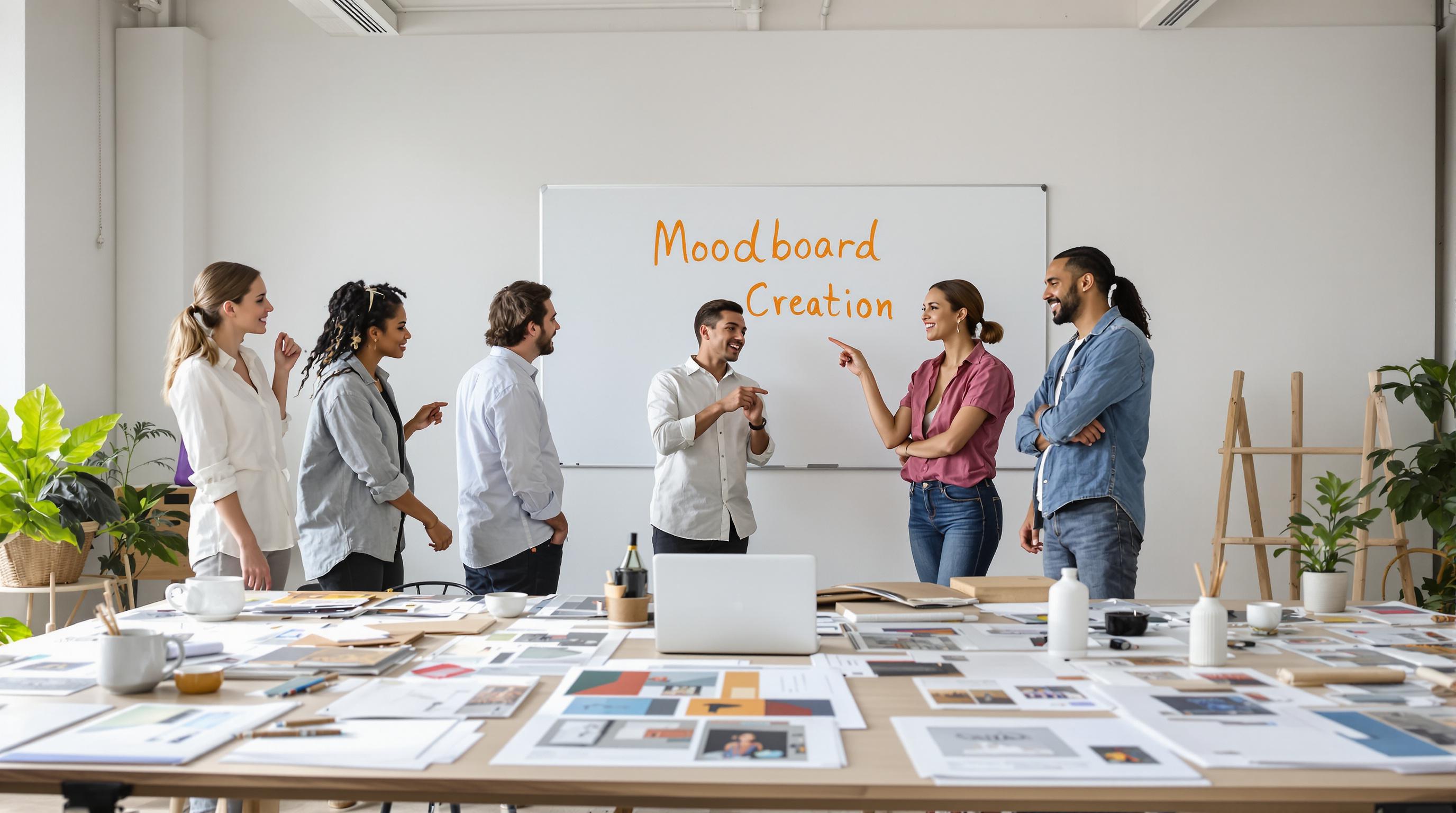Creative teams burn through ideas fast and then hit that stubborn wall. Suddenly the well runs dry and the scramble for inspiration takes over. Yet the real surprise is that methods like 6-3-5 Brainwriting can produce up to 108 new ideas in just 30 minutes. Forget hoping for a lucky spark. With the right tactics, visual teams can turn ordinary meetings into actual idea factories.
Table of Contents
- Essential Brainstorming Techniques For Creatives
- Warm-Up Exercises To Spark Team Innovation
- Collaborative Methods For Visual Project Success
- Turning Brainstormed Ideas Into Actionable Concepts
Quick Summary
| Takeaway | Explanation |
|---|---|
| Utilize structured ideation methods | Methods like 6-3-5 Brainwriting enhance collaborative idea generation and maximize output efficiently. |
| Implement warm-up exercises | Engaging in activities like visual association stimulates creativity and breaks down mental barriers before brainstorming sessions. |
| Embrace digital collaboration tools | Using platforms for real-time sharing and feedback improves project outcomes and enhances team cohesion across distances. |
| Develop a structured evaluation framework | Establish clear criteria for assessing ideas to prioritize and implement the most promising concepts successfully. |
| Foster collaborative idea refinement | Involving the team in multiple critique stages helps enhance initial concepts through collective insights and feedback. |
Essential Brainstorming Techniques for Creatives
Creative professionals face unique challenges when generating innovative ideas. Visual teams require specialized approaches that break through creative blocks and unlock collective potential. Understanding and implementing strategic brainstorming techniques can transform how teams generate and develop groundbreaking concepts.
Structured Collaborative Ideation Methods
Teams seeking breakthrough ideas need more than traditional brainstorming. The 6-3-5 Brainwriting method offers a systematic approach to idea generation. This technique involves six participants writing three ideas in five minutes, then rotating their worksheets. Each participant builds upon previous ideas, creating a dynamic and collaborative process that generates up to 108 ideas in just 30 minutes.
According to Walden University, creative teams can leverage multiple structured techniques to maximize ideation. The Stepladder Technique provides a powerful alternative, where team members gradually introduce ideas to a core group, ensuring every voice gets heard without group thinking dominating the session.
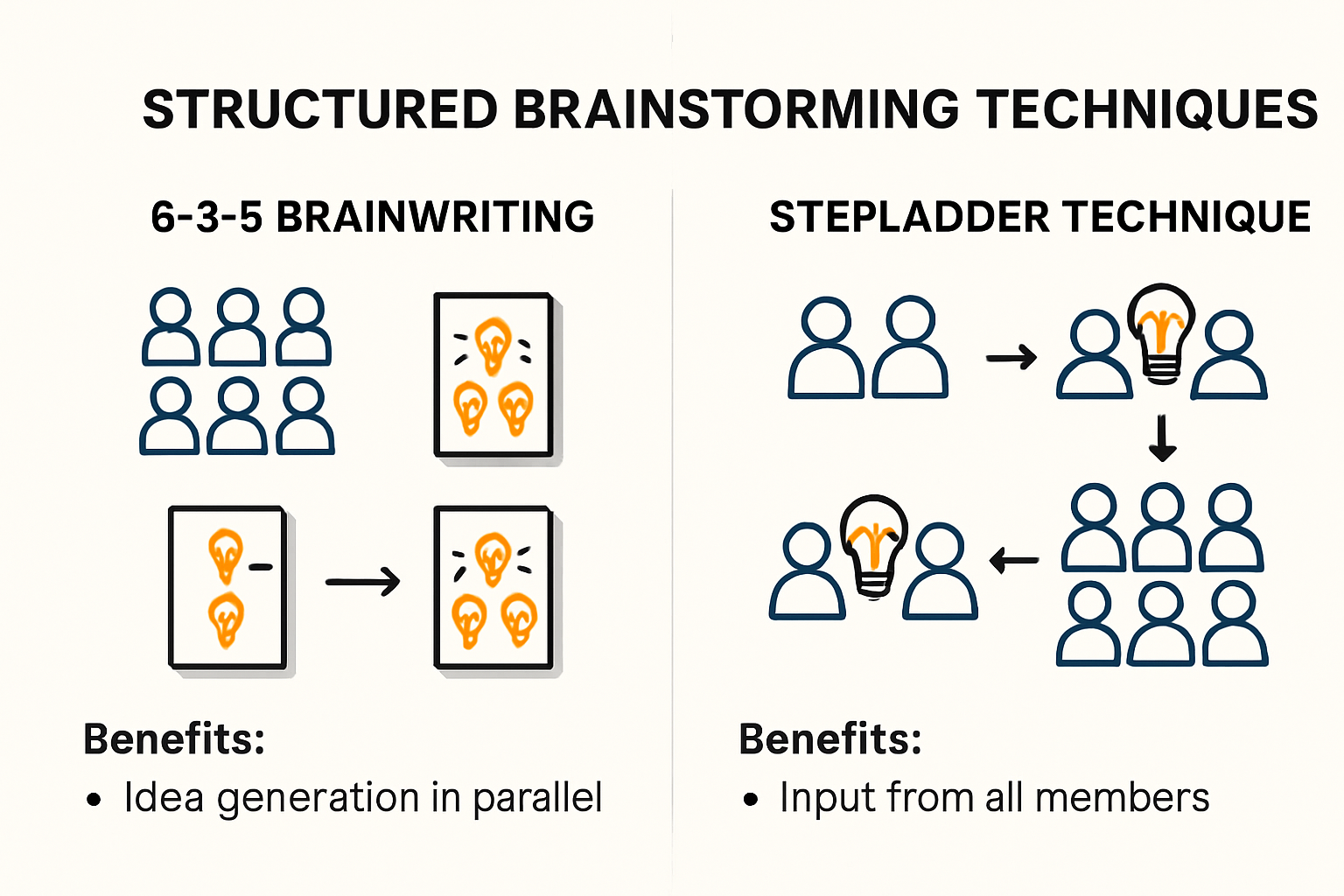
Below is a table summarizing popular structured brainstorming techniques for visual teams and their core features:
| Technique | Process Summary | Unique Strength |
|---|---|---|
| 6-3-5 Brainwriting | 6 people write 3 ideas in 5 min cycles, ideas rotate | High volume, builds on others’ thoughts |
| Stepladder Technique | People join core group one-by-one to add ideas | Prevents groupthink, ensures participation |
| Traditional Brainstorming | Open group discussion | Fast idea sharing, less structure |
| Reverse Brainstorming | Generate ideas to worsen a problem, then reverse | Uncovers hidden problems/creative angles |
Advanced Brainstorming Strategies
Reverse brainstorming offers a counterintuitive approach to problem-solving. Instead of directly solving a problem, teams first explore how to create or worsen the issue. This method helps uncover hidden perspectives and breakthrough solutions. For instance, a design team struggling with client communication might first brainstorm ways to make communication worse, revealing underlying communication barriers.
The University of South Carolina recommends setting clear parameters for brainstorming sessions. Key guidelines include:
- Establishing a specific time limit
- Creating a judgment-free environment
- Encouraging wild and unexpected ideas
- Focusing on quantity over initial quality
Technology-Enhanced Ideation
Modern creative teams can optimize their brainstorming workflow by integrating digital collaboration tools. Virtual whiteboards, real-time document sharing, and collaborative platforms allow teams to capture and develop ideas regardless of physical location.
Successful brainstorming is about creating an environment where creativity can flourish. By implementing structured techniques, embracing diverse perspectives, and leveraging technology, visual teams can transform their ideation process from mundane meetings to powerful innovation sessions.
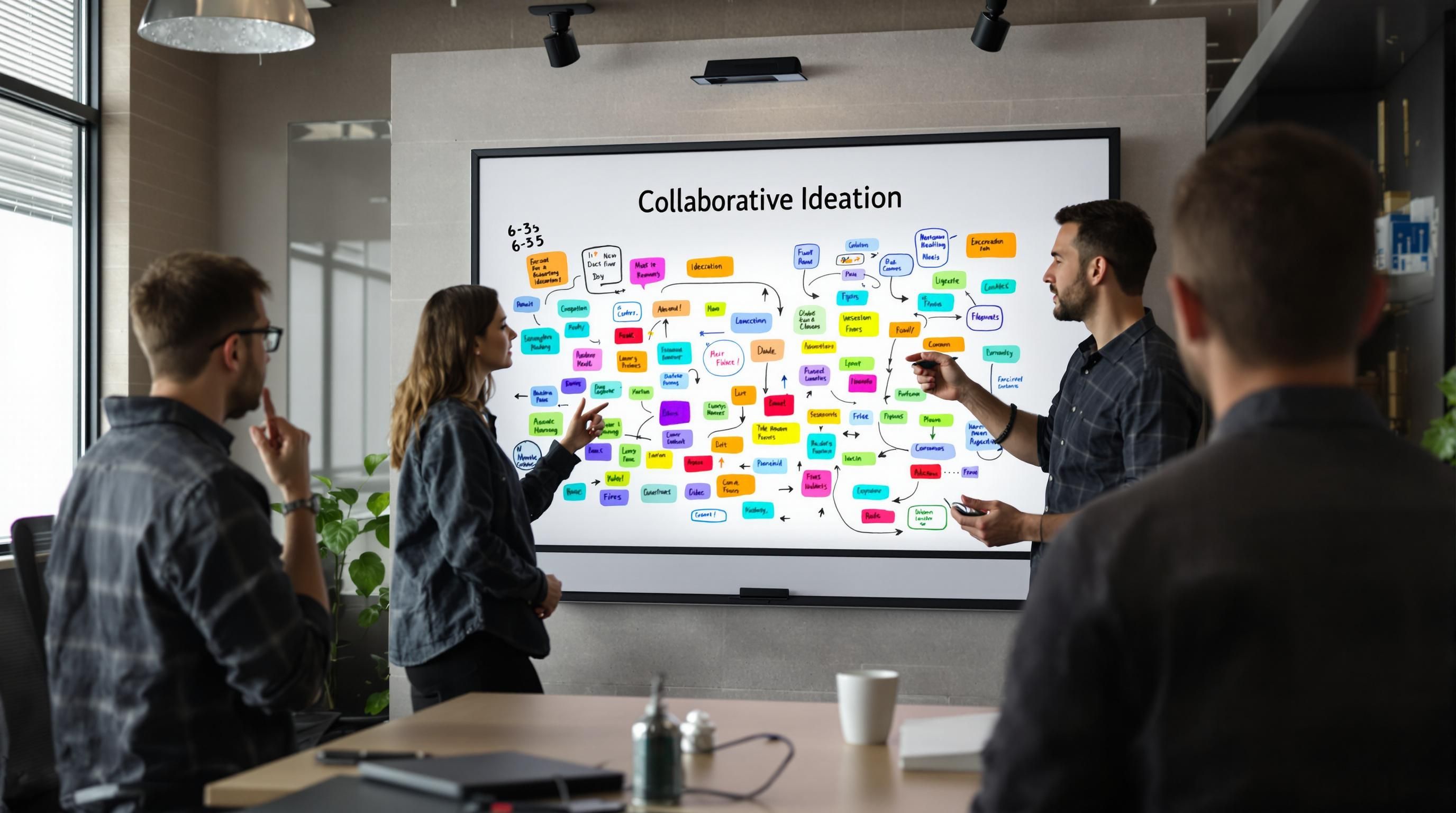
Warm-Up Exercises to Spark Team Innovation
Creative teams require strategic preparation to unlock their full innovative potential. Warm-up exercises serve as critical catalysts for transforming mental barriers into breakthrough ideas. By deliberately engaging team members through structured activities, visual professionals can rapidly shift from conventional thinking to expansive creativity.
Visual Association and Imagination Triggers
Research from the University of Nebraska-Lincoln demonstrates that preparatory creative warm-up exercises significantly enhance group brainstorming effectiveness. One powerful technique involves visual association games where team members rapidly connect seemingly unrelated images or concepts. For example, participants might receive two random visual cards and challenge themselves to create a narrative or design concept linking them.
Another effective exercise is the “Quick Sketch Challenge” where team members draw representations of abstract concepts or emotions within strict time constraints. This activity encourages participants to bypass analytical thinking and tap into spontaneous creative impulses. By limiting overthinking and promoting rapid ideation, teams can break through initial creative resistance.
Collaborative Improvisation Techniques
Collaborative storytelling and improvisation exercises provide dynamic ways to stimulate collective creativity. The “Exquisite Corpse” method adapted from surrealist art techniques requires each team member to contribute sequentially to a shared narrative or visual concept without seeing previous contributions. This approach generates unexpected connections and prevents individual creative biases from dominating the ideation process.
Key warm-up objectives include:
- Reducing performance anxiety
- Generating unexpected connections
- Promoting playful engagement
- Bypassing analytical mental barriers
Physical and Mental Activation Strategies
Physical movement can dramatically enhance cognitive flexibility. Short movement-based activities like group rhythmic clapping, synchronized stretching, or even brief dance breaks interrupt mental patterns and create neurological reset opportunities. Explore advanced team productivity techniques that integrate physical and mental activation strategies.
Successful warm-up exercises transform team dynamics from rigid structures to fluid, collaborative environments. By intentionally designing experiences that challenge conventional thinking, visual teams can consistently generate innovative solutions that transcend individual capabilities. The key lies not in complexity, but in creating safe, engaging spaces where creativity can spontaneously emerge.
Here is a table summarizing the warm-up exercise types for sparking creativity in visual teams:
| Warm-Up Exercise Type | Example Activity | Primary Benefit |
|---|---|---|
| Visual Association | Connect random images/concepts | Stimulates connections, imagination |
| Quick Sketch Challenge | Draw abstract ideas quickly | Bypasses overthinking |
| Collaborative Improvisation | Exquisite Corpse storytelling | Unexpected connections, team bonding |
| Movement-Based Activation | Group clapping/stretch/dance | Heightens alertness, resets thinking |
Collaborative Methods for Visual Project Success
Successful visual projects demand more than individual talent. They require sophisticated collaborative approaches that transform individual creativity into collective brilliance. Modern creative teams must navigate complex communication challenges while maintaining a unified vision and delivering exceptional results.
Digital Collaboration Frameworks
Research from the National Institutes of Health demonstrates that structured collaboration significantly enhances project outcomes for visual teams. Digital visualization tools enable teams to bridge geographical distances and integrate diverse perspectives seamlessly. These platforms allow real-time sharing, simultaneous editing, and comprehensive feedback mechanisms that traditional collaboration methods cannot match.
Collaborative digital environments provide multiple interaction layers. Team members can annotate designs, leave contextual comments, and track project evolution transparently. This approach ensures that every team member understands project nuances and can contribute meaningfully, regardless of their physical location.
Visual Feedback and Iterative Design
Creative projects thrive on continuous refinement. Exploring advanced visual feedback techniques reveals how structured critique processes can dramatically improve project quality. Effective feedback mechanisms go beyond simple comments, incorporating visual markup, version tracking, and comparative analysis tools.
Key collaborative strategies include:
- Establishing clear communication protocols
- Creating visual annotation systems
- Implementing structured review processes
- Developing transparent decision-making frameworks
Cross-Functional Collaboration Techniques
According to research in project-based learning environments, successful visual teams integrate diverse skill sets through intentional collaboration strategies. This means breaking down traditional departmental silos and creating fluid, adaptable team structures that prioritize collective problem-solving.
Cross-functional collaboration requires team members to understand not just their specific roles, but the broader project ecosystem. Visual professionals must develop skills in translation communication, where complex design concepts can be understood across different expertise levels.
Ultimately, collaborative success depends on creating an environment of psychological safety. Teams that feel empowered to share radical ideas, provide constructive feedback, and experiment without fear of judgment are most likely to produce groundbreaking visual solutions. The future of creative work is not about individual brilliance, but about creating synergistic environments where collective creativity can flourish.
Turning Brainstormed Ideas Into Actionable Concepts
Brainstorming generates numerous ideas, but transforming those creative sparks into tangible projects requires strategic methodology. Visual teams must develop systematic approaches to evaluate, refine, and implement their most promising concepts effectively.
Structured Idea Evaluation Framework
According to Northern Illinois University, successful idea transformation begins with establishing clear problem statements and organized group roles. Teams should create a structured evaluation process that objectively assesses each concept across multiple dimensions.
Key evaluation criteria include:
- Feasibility of implementation
- Potential project impact
- Resource requirements
- Alignment with team objectives
- Innovation potential
This systematic approach prevents promising ideas from getting lost in abstract discussions. By establishing transparent assessment metrics, teams can quickly identify and prioritize concepts with the highest potential for successful execution.
Prototyping and Rapid Visualization
Harvard University’s Project Zero emphasizes the importance of translating conceptual ideas into practical prototypes. Visual teams can leverage rapid visualization techniques to transform abstract concepts into tangible representations. Techniques like quick sketching, digital mock-ups, and low-fidelity prototypes allow teams to test and refine ideas quickly.
Explore advanced concept development strategies that help visual professionals move from initial brainstorming to concrete project frameworks. Moodboards, wireframes, and preliminary design iterations serve as critical tools in this translation process.
Collaborative Idea Refinement
Research from Utah State University highlights the significance of collaborative idea refinement. This process involves multiple stages of collective critique, anonymous feedback collection, and iterative improvement. By creating a safe environment for constructive criticism, teams can systematically enhance and evolve their initial concepts.
Successful idea implementation requires more than creative thinking. It demands a disciplined approach to concept development, where teams balance creative exploration with practical execution. The most innovative projects emerge not from a single brilliant moment, but from persistent refinement and collaborative problem-solving.
By establishing clear evaluation frameworks, embracing rapid prototyping, and fostering a culture of constructive collaboration, visual teams can consistently transform raw creative potential into groundbreaking projects that push the boundaries of innovation.
Frequently Asked Questions
What are some effective brainstorming techniques for creative teams?
Utilizing techniques like 6-3-5 Brainwriting and the Stepladder Technique can significantly enhance idea generation, allowing teams to produce a high volume of ideas collaboratively.
How can warm-up exercises improve brainstorming sessions?
Warm-up exercises such as visual associations and quick sketches stimulate creativity, reduce performance anxiety, and help participants shift from conventional thinking to expansive creativity.
What role do digital collaboration tools play in brainstorming?
Digital collaboration tools facilitate real-time sharing, feedback, and idea development, enabling teams to work effectively regardless of geographical distances and enhancing overall project outcomes.
How can teams turn brainstormed ideas into actionable concepts?
Establishing a structured evaluation framework, using prototyping techniques, and fostering collaborative idea refinement are essential steps to transform brainstormed ideas into tangible projects.
Transform Brainstormed Ideas Into Visual Results With Pikd
Does your creative team hit a wall after your brainstorming sessions? You put so much energy into structured brainstorming and warm-up exercises, but turning those bursts of inspiration into polished, shareable visuals often feels overwhelming. Juggling messy folders, endless file transfers, and scattered client feedback can drain momentum and stall collaboration.

Break free from these common barriers. With Pikd, you move from idea to finished project with speed and clarity. Share high-resolution concepts in beautiful galleries, gather real-time comments from your team and clients, and use selection-based exports to kickstart your next steps in tools like Capture One or Lightroom. Pikd gives you a single, visual-first hub for organized collaboration and actionable feedback, so your best ideas never get buried. Try Pikd now to transform every brainstorm into a creative success story.
Recommended
- How to Organize Projects: Creative Teams Guide 2025 - Webflow HTML website template
- Top Creative Block Solutions for Visual Teams in 2025 - Webflow HTML website template
- Visual Content Management in 2025: Essential Tools and Strategies - Webflow HTML website template
- How to Manage Project Deadlines: Creative Teams Guide 2025 - Webflow HTML website template
